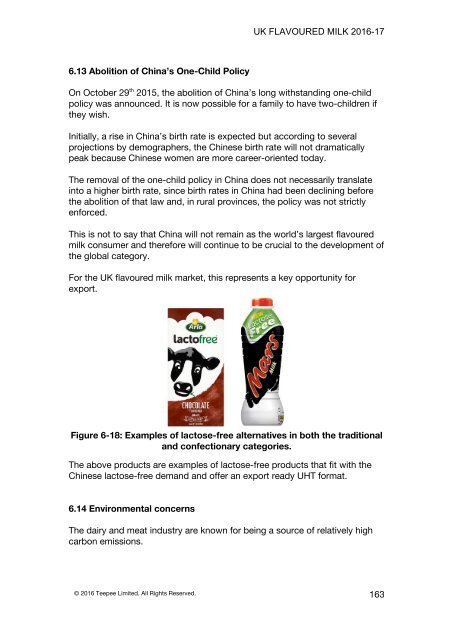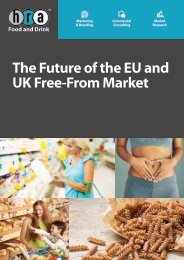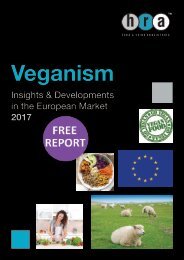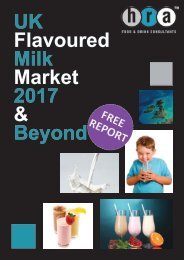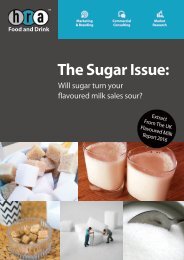FREE-UK-Flavoured-Milk-Report-2016-2017
The backdrop to the UK flavoured milk market is one of relentless change. The removal of the EU milk quotas, the transition to a Western-type diet by emerging economies, the UK sugar debate and the booming sports nutrition industry are all aspects of change that create both challenges and opportunities for the UK flavoured milk market. HRA Food and Drink Marketing has developed this report as a map to guide industry stakeholders. Although volume growth in 2014 was slightly lower than in previous years, the flavoured milk market still has plenty of room for product innovation and development. Overall, we expect the UK flavoured milk market to continue to grow over the medium term, but not without improving its nutritional profile. The sugar debate reached new heights when, in October 2015, Public Health England released a document suggesting Government intervention in the form of a sugar tax (levy). As a consequence, product reformulation has become a priority for all serious players in the market.
The backdrop to the UK flavoured milk market is one of relentless change. The removal of the EU milk quotas, the transition to a Western-type diet by emerging economies, the UK sugar debate and the booming sports nutrition industry are all aspects of change that create both challenges and
opportunities for the UK flavoured milk market.
HRA Food and Drink Marketing has developed this report as a map to guide industry stakeholders. Although volume growth in 2014 was slightly lower than in previous years, the flavoured milk market still has plenty of room for product innovation and development.
Overall, we expect the UK flavoured milk market to continue to grow over the medium term, but not without improving its nutritional profile. The sugar debate reached new heights when, in October 2015, Public Health England released a document suggesting Government intervention in the form of a sugar tax (levy). As a consequence, product reformulation has become a priority for all serious players in the market.
You also want an ePaper? Increase the reach of your titles
YUMPU automatically turns print PDFs into web optimized ePapers that Google loves.
<strong>UK</strong>#FLAVOURED#MILK#<strong>2016</strong>217#<br />
#<br />
6.13 Abolition of China’s One-Child Policy<br />
On October 29 th 2015, the abolition of China’s long withstanding one-child<br />
policy was announced. It is now possible for a family to have two-children if<br />
they wish.<br />
Initially, a rise in China’s birth rate is expected but according to several<br />
projections by demographers, the Chinese birth rate will not dramatically<br />
peak because Chinese women are more career-oriented today.<br />
The removal of the one-child policy in China does not necessarily translate<br />
into a higher birth rate, since birth rates in China had been declining before<br />
the abolition of that law and, in rural provinces, the policy was not strictly<br />
enforced.<br />
This is not to say that China will not remain as the world’s largest flavoured<br />
milk consumer and therefore will continue to be crucial to the development of<br />
the global category.<br />
For the <strong>UK</strong> flavoured milk market, this represents a key opportunity for<br />
export.<br />
#<br />
Figure 6-18: Examples of lactose-free alternatives in both the traditional<br />
and confectionary categories.<br />
The above products are examples of lactose-free products that fit with the<br />
Chinese lactose-free demand and offer an export ready UHT format.<br />
6.14 Environmental concerns<br />
The dairy and meat industry are known for being a source of relatively high<br />
carbon emissions.<br />
© <strong>2016</strong> Teepee Limited. All Rights Reserved.<br />
163


